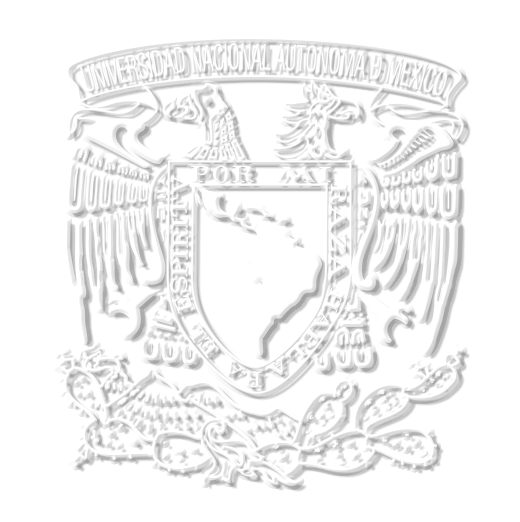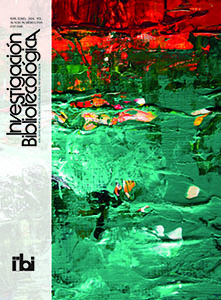Resumen
Se describen a los micro-papers como formatos novedosos e incipientes para la difusión del conocimiento científico, tanto en revistas científicas como a través de otros métodos nativos del Internet (repositorios, blogs, etcétera). Planteamos la importancia de la utilización de este formato reducido de comunicación de la ciencia para transmitir ciertos tipos de hallazgos, pues presenta una condensación de la información básica en un documento breve, de fácil lectura y con amplia audiencia, sin perder la calidad propia de los trabajos científicos revisados. Para ello, se realiza un estudio descriptivo de carácter exploratorio por medio de una revisión bibliográfica que ahonda en su uso actual y experiencias previas. Concluimos que su viabilidad para la difusión de contenidos científicos concretos busca la agilidad, sin que ello implique la pérdida de la calidad en la difusión científica.
Citas
Caldera-Serrano, Jorge. 2018. “Repositorios públicos frente a la mercantilización de la ciencia: apostando por la ciencia abierta y la evaluación cualitativa”. Métodos de Información 9 (17): 74-101. https://doi.org/10.5557/IIMEI9-N17-074101
Cañedo Andalia, Rubén, Mario Nodarse Rodríguez, Julio Guerrero Pupo y Raúl Ramos Ochoa. 2005. “Algunas precisiones necesarias en torno al uso del factor de impacto como herramienta de evaluación científica”. Actividad Científico Informativa en la Medicina 13 (5). http://scielo.sld.cu/pdf/aci/v13n5/aci01505.pdf
Cargill, Margaret, y Patrick O’Connor. 2009. Writing Scientific Research Articles: Strateg y and Steps. West Sussex: Wiley-Blackwell. https://rauterberg.employee.id.tue.nl/lecturenotes/2009-Writing_Scientific_Research_Articles.pdf
Clark, Tim, Paolo Ciccarese y Carole Goble. 2014. “Micropublicatons: A Semantic Model for Claims, Evidence, Arguments and Annotations in Biomedical Communications”. Journal of Biomedical Semantics 5: 1-33. http://www.jbiomedsem.com/content/5/1/28
Díaz Fragoso, Omar, Gabriela María Luisa Riquelme Alcantar y Gibrán Rivera González. 2021. “Ciencia abierta y su papel durante la pandemia de COVID-19”. Investigación Bibliotecológica: archivonomía, bibliotecología e información 35 (88): 147-60. https://doi.org/10.22201/iibi.24488321xe.2021.88.58403
Elavsky, Frank. 2023. “The Micro-Paper: Towards Cheaper, Citable Research Ideas and Conversations”. Prepublicación arXiv. https://doi.org/10.48550/arXiv.2302.12854
Gross, Alan, Joseph Harmon y Michael Reidy. 2002. Communicating Science: The Scientific Article from the 17th Century to the Present. Oxford: Oxford University Press.
Mahoney, Michael. 1977. “Publication Prejudices: An Experimental Study of Confirmatory Bias in the Peer Review System”. Cognitive Therapy and Research 1 (2): 161-175. https://link.springer.com/article/10.1007/BF01173636
Owen, John Mackenzie. 2007. The Scientific Article in the Age of Digitization. Dordrecht: Springer.
Palma Peña, Juan Miguel. 2022. “Acceso abierto al patrimonio informacional en humanidades y ciencias sociales de instituciones de educación superior: propuesta conceptual y análisis de normatividades”. Investigación Bibliotecológica: archivonomía, bibliotecología e información 36 (93): 51-71. https://doi.org/10.22201/iibi.24488321xe.2022.93.58615
Peralta González, María Josefa, Maylín Frías Guzmán y Orlando Gregorio Chaviano. 2015. “Criterios, clasificaciones y tendencias de los indicadores bibliométricos en la evaluación de la ciencia”. Revista Cubana de Información en Ciencias de la Salud 26 (3): 290-309. http://scielo.sld.cu/pdf/ics/v26n3/rci09315.pdf
Raciti, Daniela, Karen Yook, Todd Harris, Tim Schedl y Paul Sternberg. 2018. “Micropublication: Incentivizing Community Curation and Placing Unpublished Data into the Public Domain”. Database: The Journal of Biological Databases and Curation 2018: 1-10. https://academic.oup.com/database/article/doi/10.1093/database/bay013/4917853
Redondo Álvaro, Francisco Luis. 2008. “Algunos rasgos de la revolución científica en el Siglo XVII”. Boletín. Instituto de Estudios Giennenses (198): 565-99. https://dialnet.unirioja.es/servlet/articulo?codigo=2986385
Unesco (United Nations Educational, Scientific and Cultural Organization). 1983. Guía para la redacción de artículos científicos destinados a la publicación. 2ª ed. París: Organización de las Naciones Unidas para la Educación, la Cultura y la Ciencia.
Velasco, Berta, José María Eiros, José María Pinilla y José Antonio San Román. 2012. “La utilización de los indicadores bibliométricos para evaluar la actividad investigadora”. Aula Abierta 40 (2): 75-84. https://dialnet.unirioja.es/servlet/articulo?codigo=3920967
Yamada, Yuki. 2019. “Publish but Perish Regardless in Japan”. Nature Human Behaviour 3: 1035. https://www.nature.com/articles/s41562-019-0729-9
Yamada, Yuki. 2020. “Micropublishing during and after the COVID-19 Era”. Collabra: Psycholog y 6 (1): 1-6. https://doi.org/10.1525/collabra.370
Los autores:
- Deben remitir a Investigación Bibliotecológica: archivonomía, bibliotecología e información la Carta de autorización para la publicación de artículos.
- pueden usar su obra para compartir con la comunidad científica en los ámbitos siguientes:
- Apoyo a la docencia.
- Realizar conferencias.
- Autoarchivo en repositorios académicos.
- Difundir en redes académicas.
- Difundir en blogs y sitios personales del autor.
Ello será posible siempre y cuando se respeten las condiciones de uso de los contenidos de la revista, según la licencia Creative Commons:Atribución – No comercial – Sin Derivar 4.0.
Política de autoarchivo
En el caso de la publicación de la obra como autoarchivo, los autores deben cumplir con los aspectos siguientes:
a) Reconocer el derecho de autor a la RIB.
b) Establecer un enlace con la versión original de la contribución a la página de la revista donde se encuentre el artículo.
c) Difundir la versión definitiva publicada en la revista.
Licencia de los contenidos
La revista Investigación Bibliotecológica: archivonomía, bibliotecología e información permite el acceso y uso de sus contenidos según la licencia Creative Commons: Atribución – No comercial – Sin Derivar 4.0.

Ello implica que los contenidos sólo pueden ser leídos y compartidos siempre que se reconozca y se cite la autoría de la obra. No se puede usar la obra para fines comerciales ni modificarla.
Deslinde de responsabilidades
La RIB no se hace responsable en caso de que el autor haya incurrido en fraude o plagio científico, tampoco de los criterios reflejados por los autores. De igual forma, no es responsable por los servicios ofrecidos por terceros a partir de los enlaces electrónicos disponibles en los artículos de los autores.
En apoyo a ello, la RIB pone a disposición las responsabilidades que el autor debe cumplir en el proceso de publicación en la revista Investigación Bibliotecológica: archivonomía, bibliotecología e información en el enlace siguiente: Responsabilidades del autor.
En caso de migrar los contenidos del sitio oficial de la RIB, con implicaciones de cambio de IP o dominio, el director o editor de la revista informará a los autores sobre ello.








